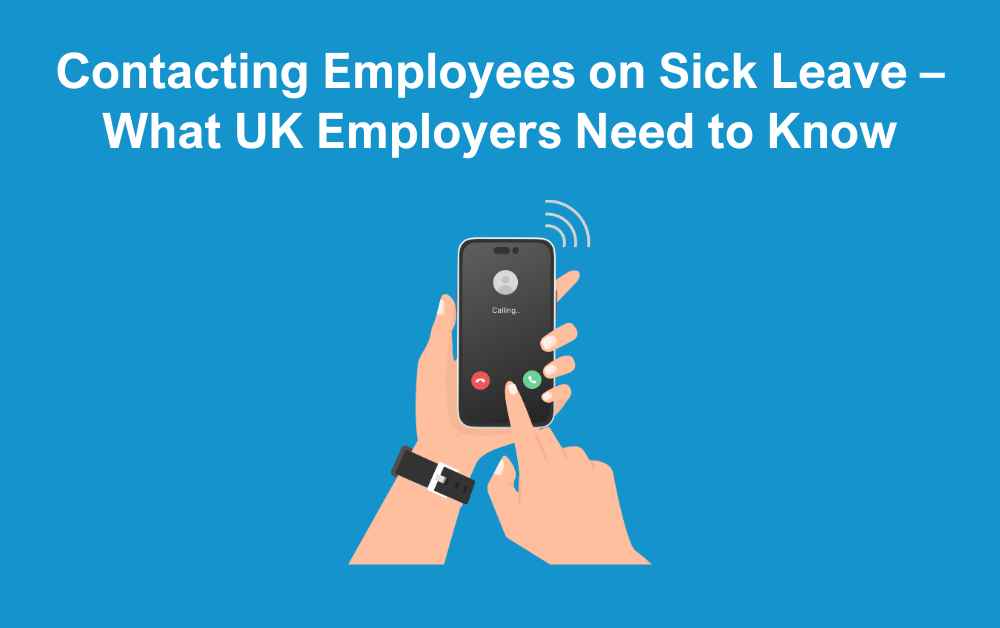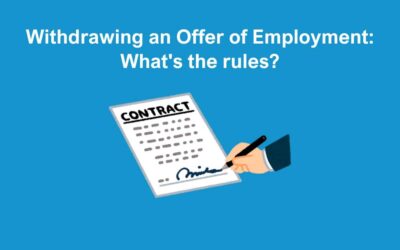When an employee is off work due to illness, it can be a sensitive situation for any employer to navigate. Many UK employers ask the question: Can you contact an employee who is off sick? The short answer is yes – but how and when you do it matters.
In this post, we’ll cover the legal considerations, best practices, and HR advice for contacting employees on sick leave, ensuring you maintain both compliance and compassion.
Is It Legal to Contact Employees on Sick Leave?
Yes, UK employers can contact employees on sick leave. There is no law that prevents communication during sickness absence. However, any contact must be reasonable and supportive, not intrusive or pressurising.
As an employer, you have a duty of care. That includes keeping in touch to check on the employee’s wellbeing, discussing sick notes (fit notes), and planning a return-to-work strategy when appropriate.
As an employer, you should agree with your employee on how to stay in touch while on sick leave and how much contact is appropriate.
Why You Might Need to Contact an Employee Off Sick
There are several legitimate reasons for contacting employees on sick leave, including:
-
Confirming receipt of a fit note or medical certificate
-
Discussing how long the employee may be absent to plan workload coverage or temporary adjustments
-
Offering support and access to occupational health services
-
Discussing a phased return to work when appropriate
-
Keeping the employee updated on significant company news
The key is to ensure your contact is necessary and conducted in a respectful and supportive manner.
Best Practices for Contacting Employees on Sick Leave
Here are some practical HR tips:
1. Set Expectations Early
Have a clear sickness absence policy that outlines how and when contact will take place during a period of absence. This avoids misunderstandings and reassures employees that communication is part of the support process.
2. Choose the Right Method of Contact
Whether it’s a phone call, email or letter, the method should depend on the employee’s condition and preferences. Some may find phone calls stressful during illness, so a gentle email may be more appropriate.
3. Keep Communication Supportive
Avoid discussing workload pressures or making the employee feel guilty for being unwell. Focus on their wellbeing and how the company can support them.
4. Frequency of Contact
There is no ‘one-size-fits-all’ approach. For short-term absences, one or two check-ins may suffice. For long-term sick leave, you might agree on regular updates – weekly or fortnightly – depending on the situation.
5. Document Communication
Always record the date, time, and nature of any communication with an employee on sick leave. This provides a clear record in case any issues arise later.
What If the Employee Doesn’t Want to Be Contacted?
Some employees may request no contact while off sick. While this should be respected where possible, employers can still maintain minimal, essential contact for legitimate business reasons, especially during long-term absence.
A balanced approach is needed. If you’re unsure how to proceed, professional HR advice can help you stay compliant.
Can I ask an employee to attend a meeting while off sick?
While it’s acceptable to ask an employee to keep in touch during sickness absence, requiring them to attend a meeting is a different matter and depends on both the purpose of the meeting and the employee’s health. If the employee is seriously unwell, such as being hospitalised or bed-bound, attending a meeting would be unreasonable. Meetings relating to day-to-day work are generally inappropriate during sick leave, as employees should not be expected to carry out work-related duties. In cases involving urgent disciplinary matters, employers should ideally wait until the employee is fit to attend, or alternatively allow them to respond in writing.
Sickness Absence Policy
A sickness absence policy outlines how an organisation manages illness-related absences, including reporting procedures, required documentation, and available support. It ensures consistency and fairness by setting clear expectations, detailing monitoring processes, and outlining return-to-work measures and adjustments.
A sickness absence policy should include the following key elements:
- Purpose & Scope
- Reporting Procedures
- Certification Requirements
- Sick pay entitlement
- Keeping in touch
- Monitoring and Absence Triggers
- Return-to-Work Procedures
- Occupational Health and Support
- Long-Term Absence Management
- Employee Responsibilities
- Employer Responsibilities
- Disciplinary and Capability Procedures
- Policy Review and Updates
Supporting a Return to Work
Contacting employees on sick leave also plays a key role in planning for a successful return to work. Keeping in touch allows you to:
-
Discuss potential adjustments
-
Consider a phased return or light duties
-
Refer to occupational health if needed
-
Prepare for a return-to-work meeting
These steps help reduce anxiety and improve employee confidence as they transition back to work
Final Thoughts
Contacting employees during this time can be essential for maintaining communication, supporting employee wellbeing, and planning operational needs. However, it must be handled with care, empathy and a clear HR policy in place.
Whether you’re managing short-term absences or navigating complex long-term sick leave cases, getting the right HR support is key.
Need Help Managing Sickness Absence?
At The HR Booth, we support UK employers with sickness absence management, employee wellbeing, and all aspects of HR compliance. If you’re unsure how to approach contacting employees on sick leave, we’re here to help.







